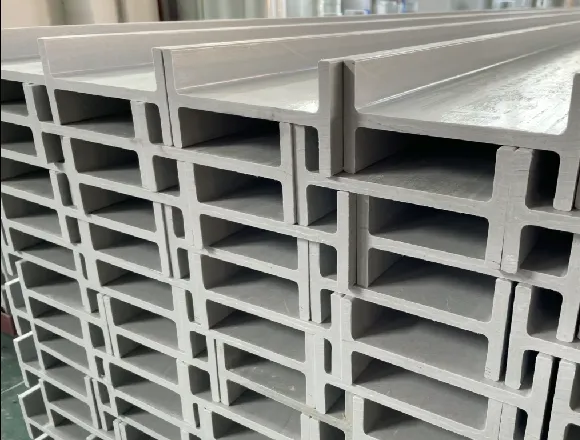loading...
- No. 9, Xingyuan South Street, Dongwaihuan Road, Zaoqiang County, Hengshui, Hebei, China
- admin@zjcomposites.com
- +86 15097380338
- Welcome to visit our website!
heavy duty frp grating
Heavy Duty FRP Grating A Durable Solution for Industrial Applications
In today's industrial landscape, the importance of robust and reliable materials cannot be overstated. One such material that has garnered significant attention in recent years is Fiber Reinforced Plastic (FRP) grating. Specifically, heavy-duty FRP grating has emerged as a critical solution for various applications across multiple industries, owing to its enhanced strength, durability, and low maintenance requirements.
What is Heavy Duty FRP Grating?
FRP grating is a composite material made from a polymer matrix reinforced with glass or other fibers. This combination results in a lightweight yet extraordinarily strong material, ideal for environments where traditional materials like steel or wood may fail. Heavy-duty FRP grating is specifically designed to withstand higher loads and impacts, making it suitable for use in demanding industrial settings, including chemical plants, hazardous waste facilities, and heavy manufacturing environments.
Key Advantages of Heavy Duty FRP Grating
1. High Load Capacity As the name suggests, heavy-duty FRP grating is engineered to support considerable weight without bending or breaking. This makes it ideal for walkways, platforms, and support structures in industries where heavy operations take place.
2. Corrosion Resistance One of the standout features of FRP grating is its ability to resist corrosive substances. In environments where chemicals are prevalent, such as wastewater treatment plants or petrochemical facilities, traditional materials can deteriorate quickly. Heavy-duty FRP grating offers a long-lasting alternative, substantially reducing maintenance costs and downtime associated with corrosion-related repairs.
3. Lightweight Despite its high load capacity, heavy-duty FRP grating is significantly lighter than metal grating, simplifying installation processes and reducing stress on supporting structures. This weight advantage also means lower transportation costs and easier handling on-site.
4. Safety Features Safety is a paramount concern in industrial environments, and FRP grating excels in this regard. The surface of heavy-duty FRP grating can be designed to be slip-resistant, providing enhanced traction even in wet or oily conditions. Additionally, it does not conduct electricity, reducing the risk of electrical hazards.
heavy duty frp grating

5. Versatility Heavy-duty FRP grating is adaptable to a wide range of applications beyond industrial uses. It can be employed in construction, commercial settings, and even residential projects where durable and maintenance-free flooring is desired.
Applications of Heavy Duty FRP Grating
Heavy-duty FRP grating finds use in various sectors, including
- Chemical Processing Its superior resistance to chemicals makes FRP grating an excellent choice for platforms, staircases, and walkways in chemical manufacturing facilities.
- Water Treatment In wastewater treatment facilities, where exposure to corrosive materials is common, FRP grating can withstand harsh conditions while providing a safe working environment for employees.
- Marine Environments FRP’s resilience to saltwater makes it an ideal material for docks, piers, and other marine applications, preventing rust and deterioration typically associated with metal.
- Mining and Heavy Manufacturing With the need to support heavy machinery and foot traffic, heavy-duty FRP grating provides a safe and reliable infrastructure component.
Conclusion
In conclusion, heavy-duty FRP grating represents a significant advancement in materials used for industrial applications. Its combination of high load capacity, corrosion resistance, lightweight nature, and safety features makes it an ideal choice for various demanding environments. As industries continue to seek out solutions that enhance durability while minimizing maintenance costs, heavy-duty FRP grating will undeniably play a pivotal role in future industrial applications. The evolution of materials like FRP indicates a clear trend towards improved efficiency and safety in the workplace, ensuring that industries can thrive while maintaining the highest standards of operation.
-
GRP Structures: The Future of Lightweight, High-Performance EngineeringNewsJun.20,2025
-
FRP Water Tank: High-Performance Storage for Corrosive and Clean Water SystemsNewsJun.20,2025
-
FRP Square Tube: The New Industry Standard for Chemical and Structural ApplicationsNewsJun.20,2025
-
FRP Pultruded Profiles: The Ultimate Choice for Lightweight Structural StrengthNewsJun.20,2025
-
FRP Handrails: The Safer, Smarter, and Stronger Choice for Modern InfrastructureNewsJun.20,2025
-
FRP Grating: The Smart Solution for Durable, Lightweight Industrial FlooringNewsJun.20,2025
-
Why Choose a Galvanized Water Tank for Your Storage NeedsNewsMay.21,2025
